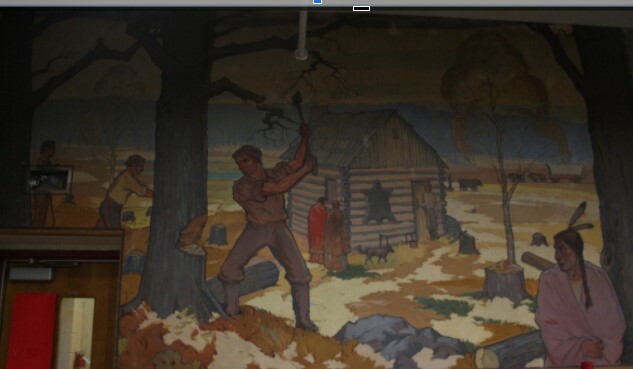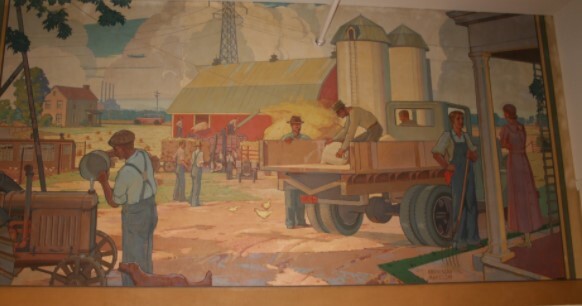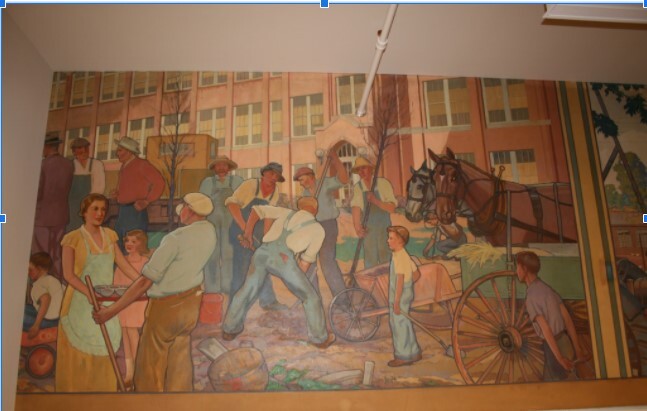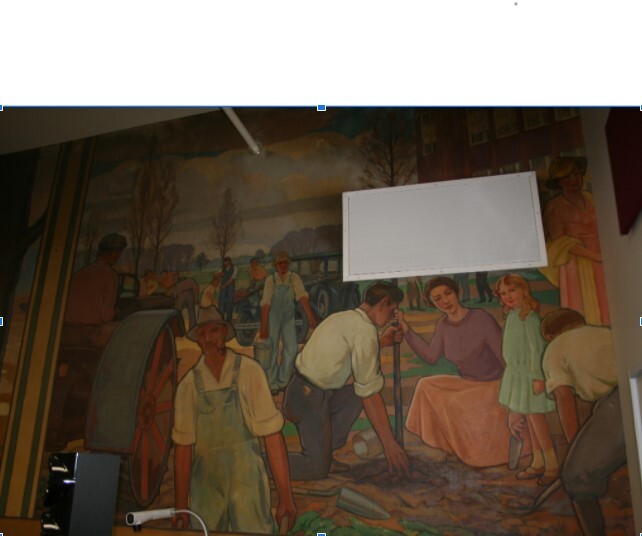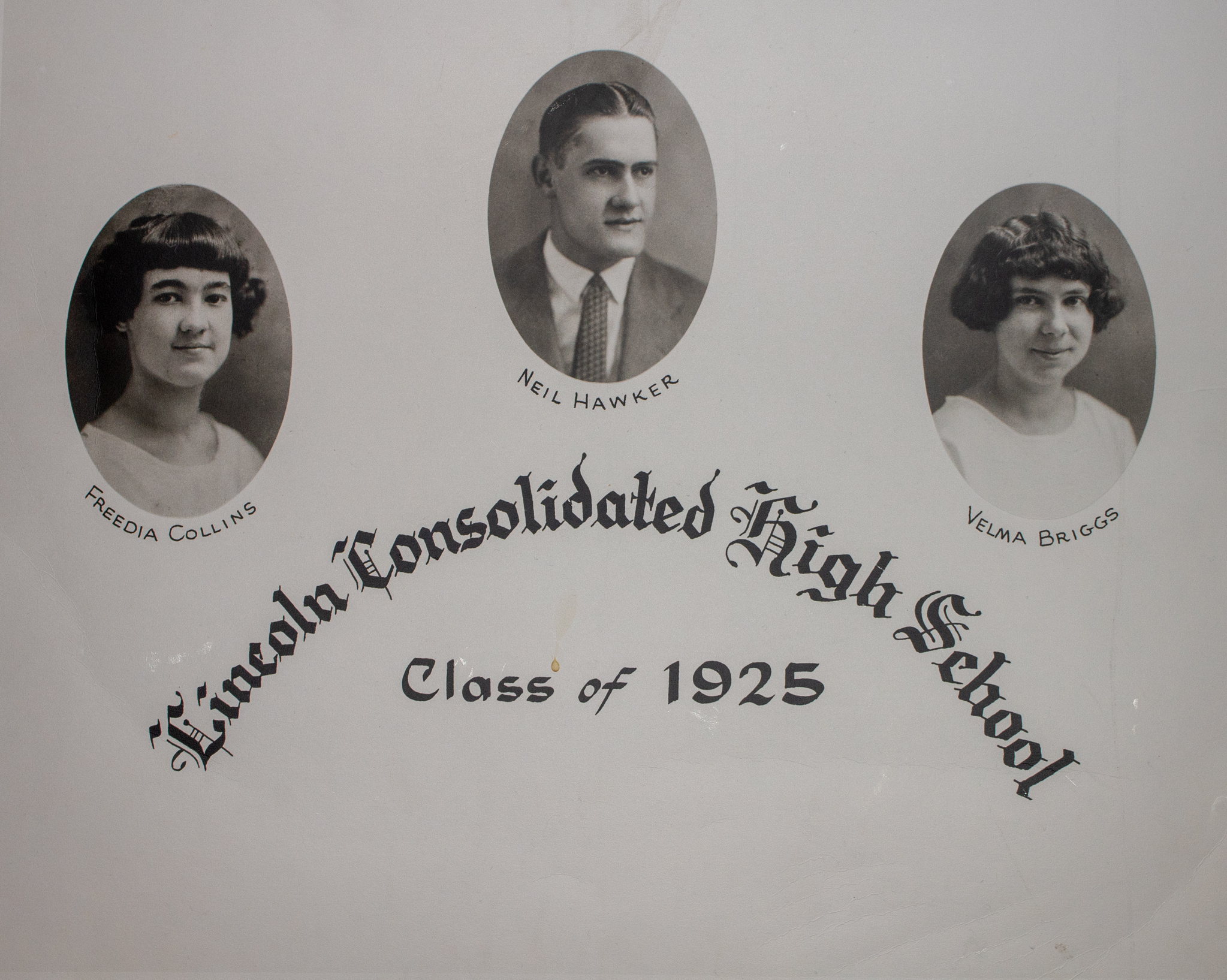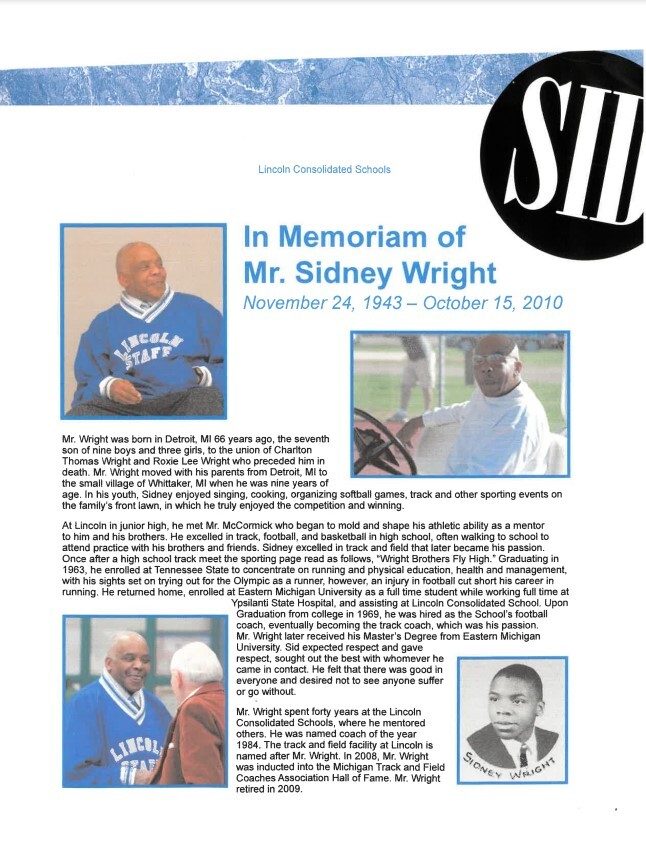Lincoln Heritage
Schoolhouses
A Brief History of Lincoln Consolidated School District

A BRIEF HISTORY OF LINCOLN CONSOLIDATED SCHOOLS
The students of thirteen one-room schools came together in 1924 as a result of a goal by a far-sighted educator. Dr. Marvin Pittman, of Michigan State Normal College (now Eastern Michigan University), formed the Rural Education Club in 1921. This group took the name of “The Michigan Trailblazers” symbolizing the broad vision the group shared for public education.
Pittman presented his dram of a rural training school linked to the college at a town meeting on November 2, 1922, held at the Willis Methodist Church. On May 2, 1923 voters in twelve districts approved the plan of consolidation by a vote of 279-210. In July 1923, a thirteenth district, Vedder, petitioned to join the consolidation. Voters approved a bond proposal to construct a new school located at the corner of Willis and Whitaker Roads. The new building provided facilities, which one-room schools could not offer, and had modern conveniences which most homes lacked. The cornerstone was laid in April 1924 and the building opened October 31, 1924.
The new district was originally named “The Agricultural Rural Training School No. 1 of Ypsilanti and Augusta Townships”. The newly elected Board of Education wanted to honor Dr. Pittman by naming the district after him, but he requested it not be done. The Board decided between “The Trailblazer District” and “Lincoln”. Ultimately the Board and students selected the name, “Lincoln Consolidated School”. The school board felt it was the fulfillment of the ideals for which Abraham Lincoln stood -equal educational opportunity for rural as well as urban students.
Tragic Chapter

From the January 1926 School Planner-
On December 5th, a most tragic chapter was added to the annals of the Lincoln Consolidated School, when this remarkable building was gutted by fire.
The origin of the fire is unknown. The steam heating plant was located in a one-story-protected building outside the main building, shut off with metal doors, and was not damaged by the fire. The electric wires were run in metal conduits and had been in service several many months. It is, therefore, thought impossible that the fire could have originated from either of these sources and it seems equally improbable to have resulted from a careless smoker or mischievous student.
The fire was first seen burning through the roof by neighbors at 5:00 am. Although the roof was all ablaze when the first persons arrived at the building, men worked in the corridors for an hour and thirty minutes removing records, furniture, doors, and practically everything that could be loosened.
As the holiday vacation was so near, it gave a little more time to arrange for the remainder of the year's schoolwork. This was well cared for through the kindness of the various schools. Wherever space was available it was offered: Roosevelt, St. John's Catholic, Woodruff, Prospect, Ypsilanti High, all proved friends in need.
No assistance was available from neighboring fire departments because of the insufficient water supply, the only source being the house pump. The fire extinguishers were used for the most part to protect the adjacent farm property.
The insurance on the building was $170,000 and $10,000 on furniture.
The Warren Holmes-Power Company, Architects, were notified at once to proceed with the adjustment of insurance and the wrecking of such portions of the building as should be taken down. The insurance was adjusted promptly and satisfactorily by the Mills Mutual Agency and the Architects instructed to prepare plans for the consideration of the school district for rebuilding in fireproof construction, at the same time providing for an addition. The H-ventilating piers, the corridors, and stairs, and a large portion of the outside walls will be used again in the rebuilding
New Building Dedication
On February 12, 1927, the new building was dedicated just two years from the first dedication and again honoring Lincoln's birthday. The new building is quite like the first in appearance, some original wall remaining, but seventy-six feet was added to the west wing, giving it the extra room needed.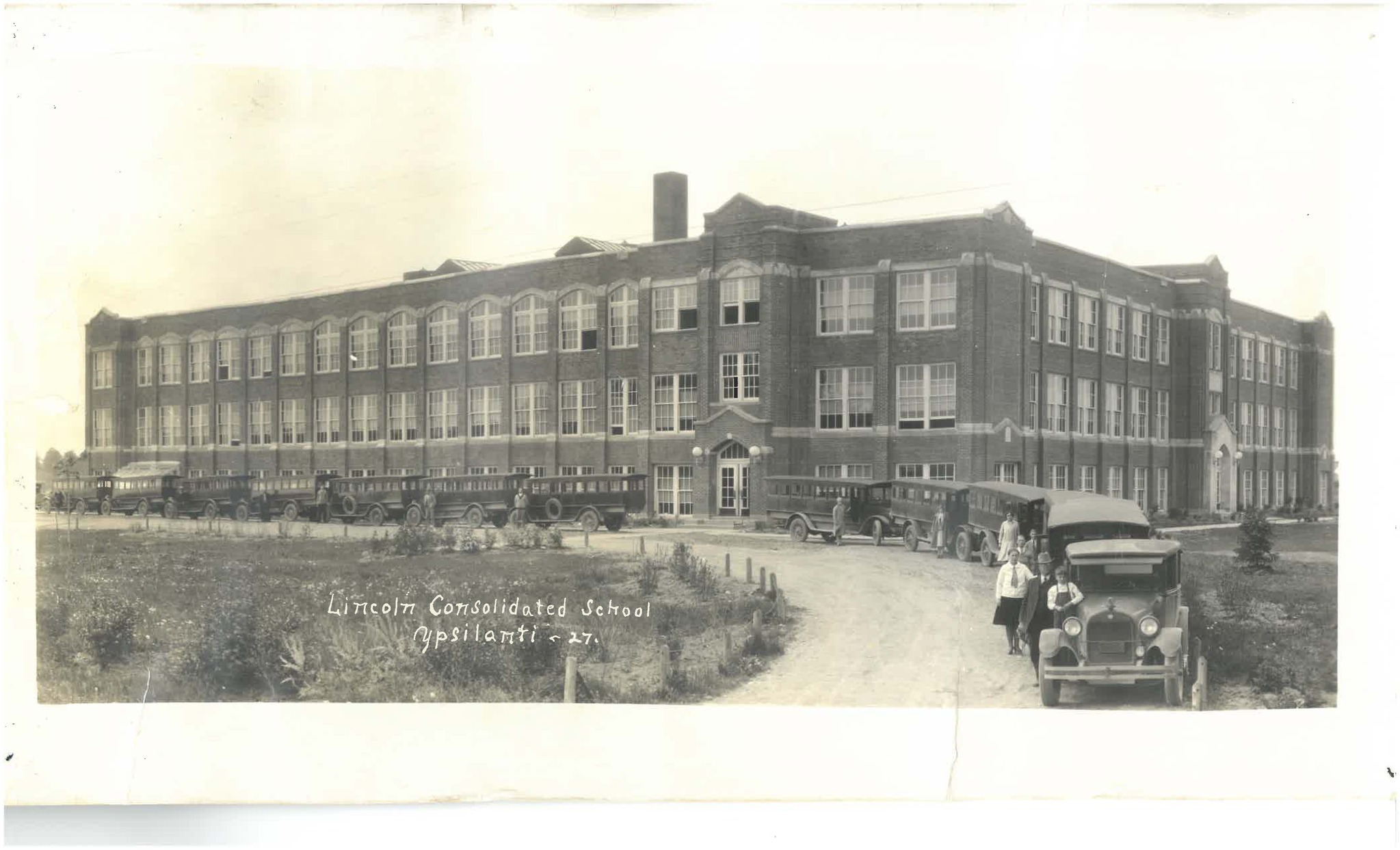
Work Day at School
During the spring vacation in 1925, an important worth-while event occurred, an enormous "bee" was held. The dictionary tells us a bee is a social gathering or a contest, and surely this meeting filled both definitions. Men by the score appeared as by magic with shovels, spades, and hoes in great numbers, trucks to draw gravel, likewise two cement mixers put in an appearance. The arrangement was made for the men to work in groups and soon lines were run for the greater portion of the cement walks. Other groups with horses and wagons removed the soil to various places thus making a start on the track, but night came with only a portion of the work completed.
Mr. Tape (first principal) who had talked all winter of having the bee, was a bit disappointed at the amount of work still remaining to be finished, so rather hesitatingly suggested their coming again and the next day probably was very glad to hear the answer spelled in capitals: "SURE!"
Another day's work was done and still, the work lay unfinished, so again, the third day they came and pretty well finished the work. -"From My Window" by Mrs. Ina Champion
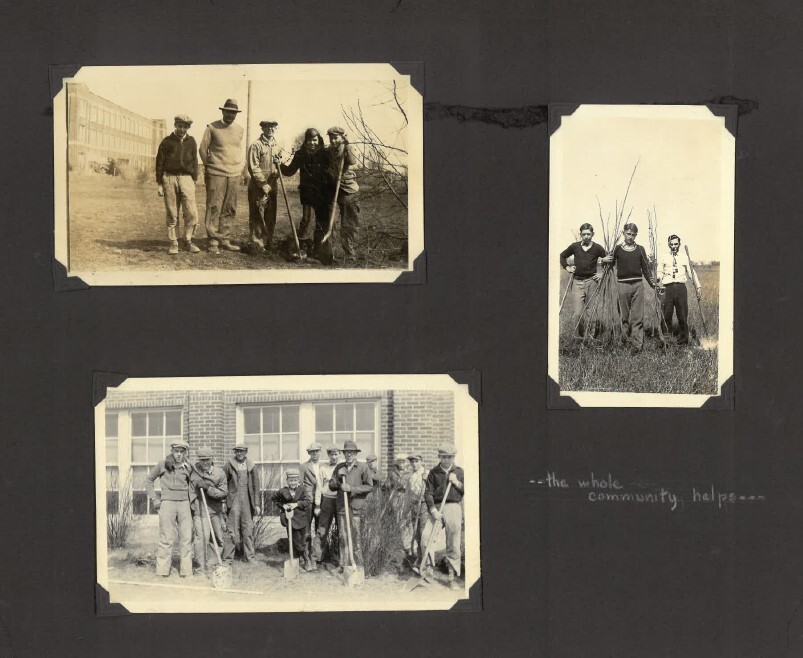
Community Fair
Community Fair- On three October days, the last date October 13 and 14, 1933, namely Friday evening and all day Saturday, Lincoln School and Community met for a gala day. Each fair differed in some respects, but there was similar enough that they can be described as a whole. Everything movable was moved from the garage, the floor covered with a liberal amount of straw, and all day Saturday it was filled with some fine-looking cattle that are privileged to live within the borders of our 63 square miles. Were they nervous? Not a bit of it; contented Jerseys, sheep, Holsteins, and goats eating good alfalfa hay and looking as though they'd like to stay all winter.
-"From My Window" Mrs. Ina Champion-1938
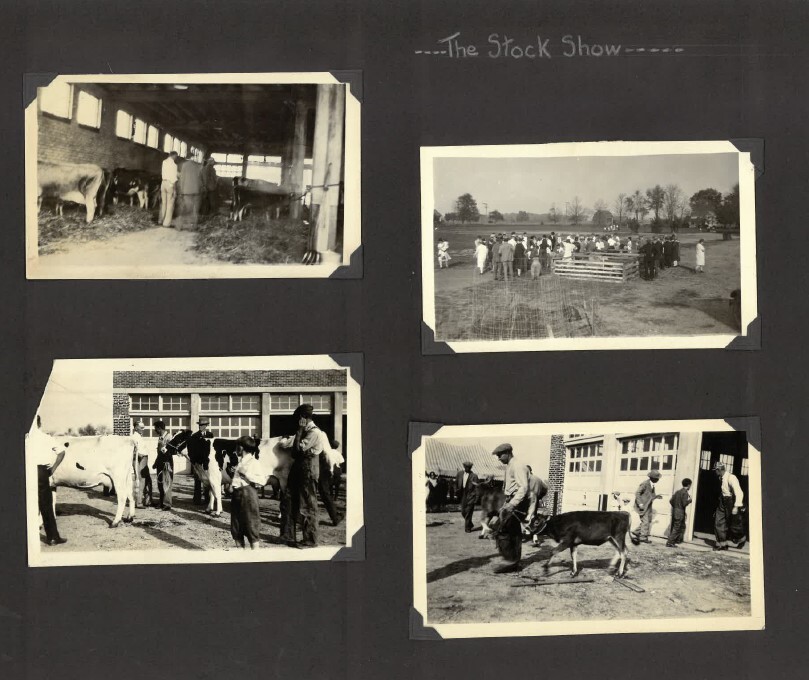
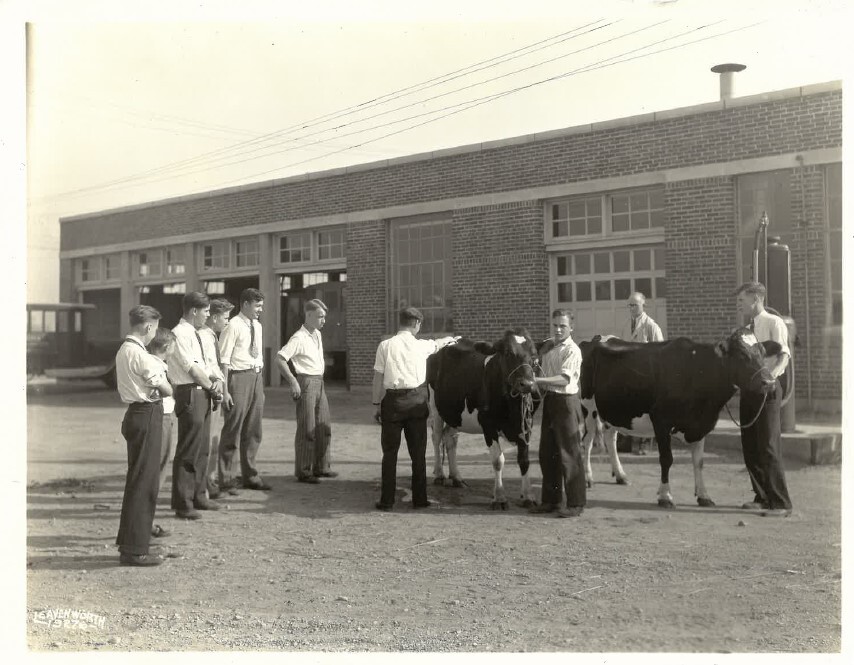
The Fleet of Busses
The Fleet of Busses
On April 6, 1927, the school board voted to purchase busses from the company contracted from the last three years. The district would buy the busses and split the cost with the Normal College (EMU) and provide and maintain a garage. The fleet of 13 REO busses was purchased for $9100 and was used for seven more years and on September 11, 1935, an entirely new fleet of 17 Ford busses was purchased for the sum of $23,354-. "From My Window" Mrs. Ina Champion 1938
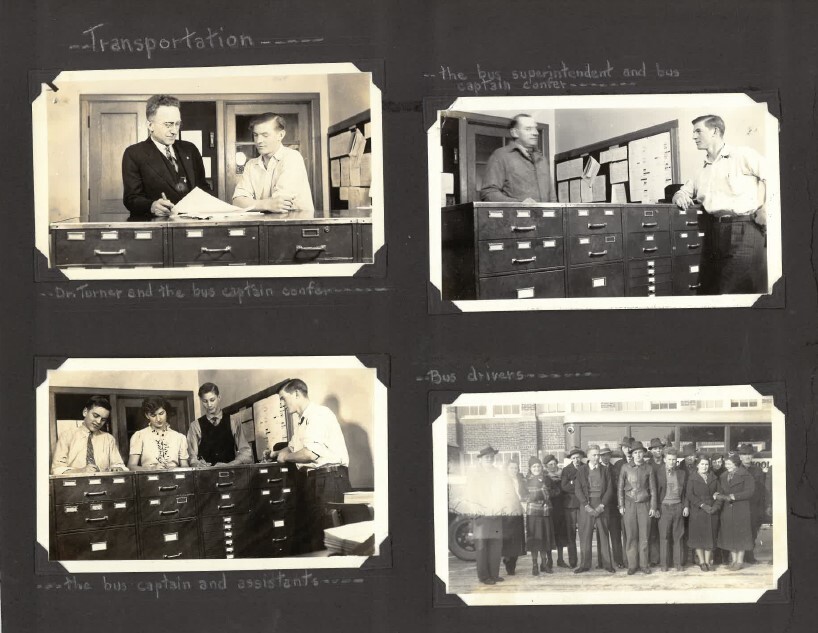
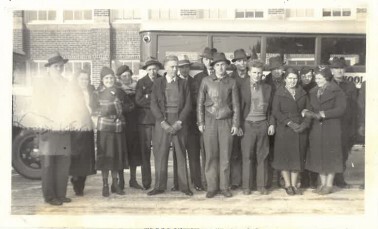
Garden and Fountain
"From My Window"-By Mrs. Ina Champion 1938
On the west side of the school grounds, there were no trees so it was thought that a little grove would be delightful. Various ideas regarding this were presented but a council meeting Mrs. Euguene Staebler made the suggestion to plant trees, the more the better, in memory of the district’s pioneers. This met with favor and for months this afternoon was talked about and planned for. There was to be a Lincoln tree, also one for each of the thirteen districts, and by reading the announcement which was sent out regarding it, the immensity of the program still surprises me for in addition, there was to be a family memorial park as well as, the pioneer memorial section, a formal program, the children were to assist, giving them a half-holiday, also a perennial that could be spared from your garden and last but by no means least were the words- “we have a tag for your tree.”
Well, the afternoon arrived and with it, people and trees. Everywhere trees and more trees brought by truck, touring car, horse, and buggy and pulled by hand, and all busy with spade and shovel.
R.F.Walters who literally spent his days in a country and who seldom found time for anything else, in the forenoon went to the woods and brought a black walnut tree to plant in memory of his father.
Mrs. Mary Dickerson whose sister had taught a number of years in the little Island School 50 years before, brought a tree in memory of that loved sister who years before given much of her lovely self to the community. It was an ash maple and she was sorry it wasn’t a finer kind but someway if it had lived and we knew which one it was, there are some even yet who would stand by it and think kindly thoughts of our long-ago patient teacher, Clara Craft. The neighbor from across the way Elmer Sanderson said that as it was a family and pioneer commemoration he would plant five trees for five generations who had and still do live on the farm taken by them from the government, thus honoring grandfather, father, himself, children and grandchildren.
Trees have been set by various classes also remembrance trees for the ones who have passed on for we have been unfortunate enough to have at least seven of our boys, either graduates or high school students, meet accidental deaths. The grounds are quite familiar to me and yet with all the trees and shrubs, there are two that I know about, one a beautiful cut-leaf birch near the fountain donated by Leela Linder Laing and very near it some 25 feet or so of privet hedge given by my late husband, Henry Champion. Whatever may be said regarding tree planting would be incomplete without a few words about the beauty of the trees...
October 12, 1938, at 3 p.m.-
The autumn has been a particularly beautiful one, as summer weather. The thermometer registers 82 degrees and for three weeks the autumn foliage has been gloriously beautiful. I look across a narrow strip of alfalfa probably 1twelve inches high coming on for the fourth time this season; bordering this is evergreens, mostly pines set in the spring of 1933, the height varying from four to ten feet, and their dark shades of green are surely just right for one side of this picture frame. Then on the east are the sugar maples, with the gorgeous coloring of red, green, gold, and brown while on the south the soft maple syrup group gives us all the pastel shades imaginable. Then the eye falls to the picture itself and we see the grass still green and well kept as it has been all summer and the shrubs, not to be outdone by their friends, the trees, show a wonderful beauty, particularly one plot of dark red, and after much research, I find the common name is bush bittersweet.
1930 Scrapbook (1)
WPA-Lincoln Statue
The Lincoln Statue speaks for itself, it was unveiled May 4, 1938, with approximately 900 persons present. The main address was given by Dr. Eugene B. Elliott, superintendent of public instruction. Probably what will be of interest as years pass will be the record that Mrs. Nellie Sweet of Ypsilanti was presented as the one present who saw the funeral train that carried Lincoln back to Springfield. Mrs. Sweet was eighty years of age while the tiniest tot of the kindergarten, Virginia Robbins pulled the cord, thus assisting the artist Samuel Cashwan with the unveiling. Another item not thought about generally was the spot chosen, the first 1-4 acre school plot purchases 90 years before. (Island District)-Mrs. Ina Champion 1938
WPA Federal Art Project
Federal Art Project-1936
Depicts the history of Lincoln Consolidated School District and early pioneer life. Black and white photos from 1936. For many years this section of the building was not available for use due to lack of sufficient exits to meet fire codes. The area was used for storage and accessible but not for classes. The area was restored and remodeled and includes a conference room known as the " Whittaker Room" , art and music classrooms. The access to stairwells was completed including the addition of an elevator to meet the fire code.
WPA Federal Art Project
A series of murals on the third floor of Brick Elementary -the original Lincoln Consolidated School building, Ypsilanti, done by two brothers, Leon and Bronislau Makielski of Ann Arbor. The murals depict Lincoln's history.
November of 2006- an acquaintance of Leon Makielski's niece is the proud owner of the original painting Leon painted as a practice piece to submit to the Federal Art Project.
Lincoln HS 1962 Dedication
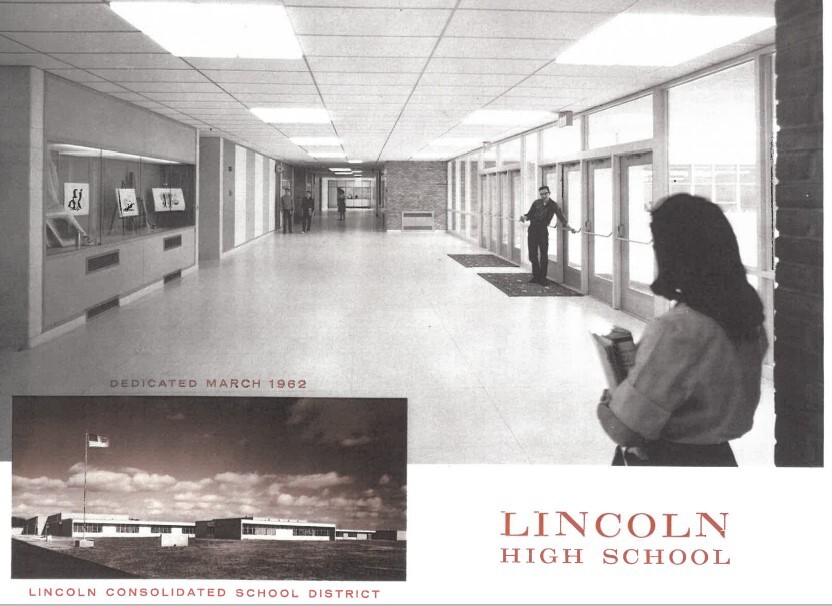

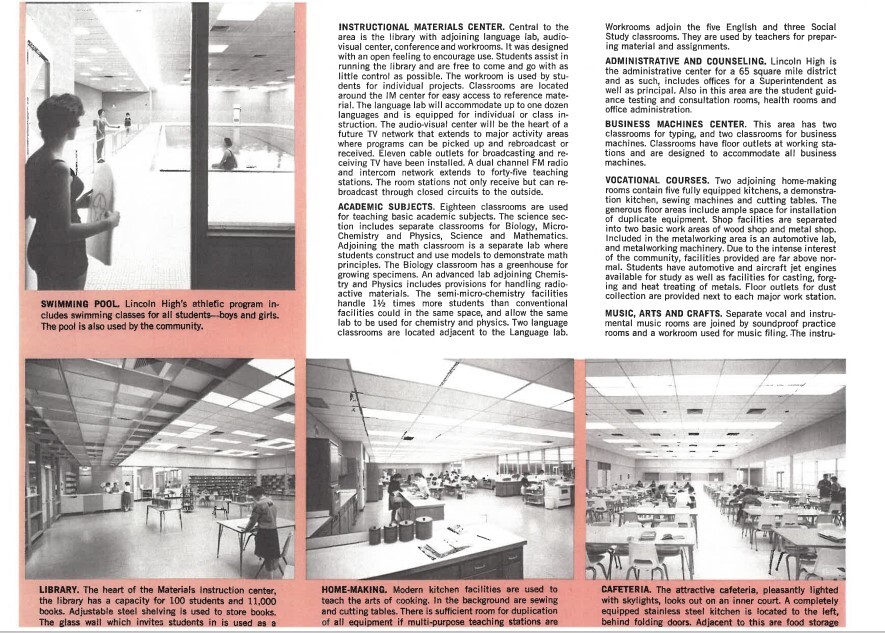
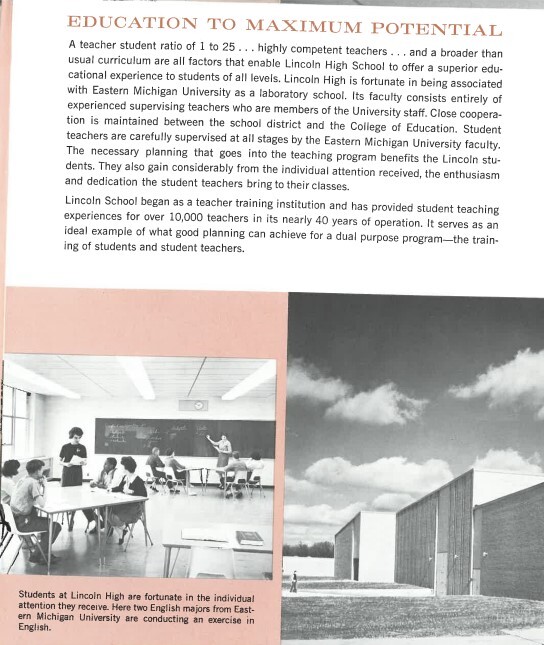
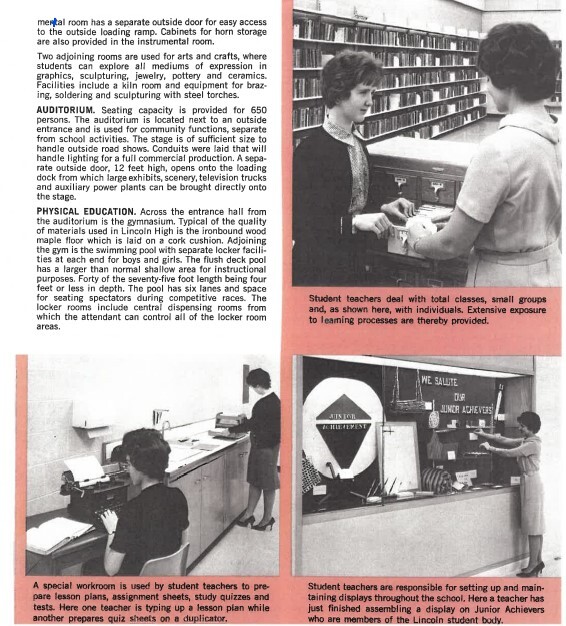

In Memoriam-Lincoln Men WWII

The Gold Star
During World War I, a practice developed across the country: Families displayed flags featuring a blue star, a sign that a family member was fighting in the war. Some flags would display more than one star.
Just how the next tradition began is unclear, but when a soldier died, the blue star was replaced by a gold one.
In 1918, President Woodrow Wilson approved a recommendation by the Women’s Committee of National Defenses to wear a black armband with a gold star — an update on traditional signs of mourning. It’s believed Wilson coined the term “Gold Star Mother.”
Over time, two types of service flags were created. One banner had a white background, red border, and blue star. The other had a white background, blue border, and gold star.
In 1928, 25 mothers met in Washington, D.C., to establish a national organization called American Gold Star Mothers Inc. That organization exists to this day.
In 1947, Congress authorized the military to issue gold star lapel pins to families of those who had been killed in combat. In 1973, Congress approved another for families of service members who died while on active duty but not in combat.
During World War II, the star flags were common sights across the country, often displayed in windows.
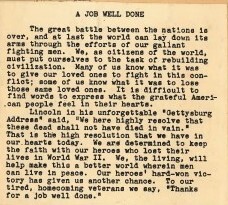
In Memoriam-Lincoln Men Vietnam
We Remember Lincoln Consolidated Schools District Alum: Thomas L. Cleland (Class of 59), Kenneth l. Fulton (Class of 64) Lavern (Butch) Lamey (Class of 67), William Gouger (Class of 67). The Memorial Plaque hangs in the High School near the west gymnasium.
Thomas Leonard Cleland visit:
https://www.vva310.org/cleland
Kenneth Lige Fulton visit:
https://www.vva310.org/fulton
William David Gouger Jr visit:
https://www.vva310.org/william-david-gouger-jr
Lavern Michael Lamey (Butch) visit:
https://www.vva310.org/:lavern-michael-lamey
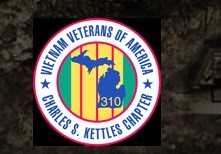
1930 Scrapbook
1930 Scrapbook (2)
1930 Athletic Scrapbook
Memorial Day Tribute

A Visual History of Lincoln Consolidated Schools
Class Composites
Class Composites1926 to 1939.pdf
Class Composites 1940 to 1948*
1944 missing or possibly not taken due to War World II

